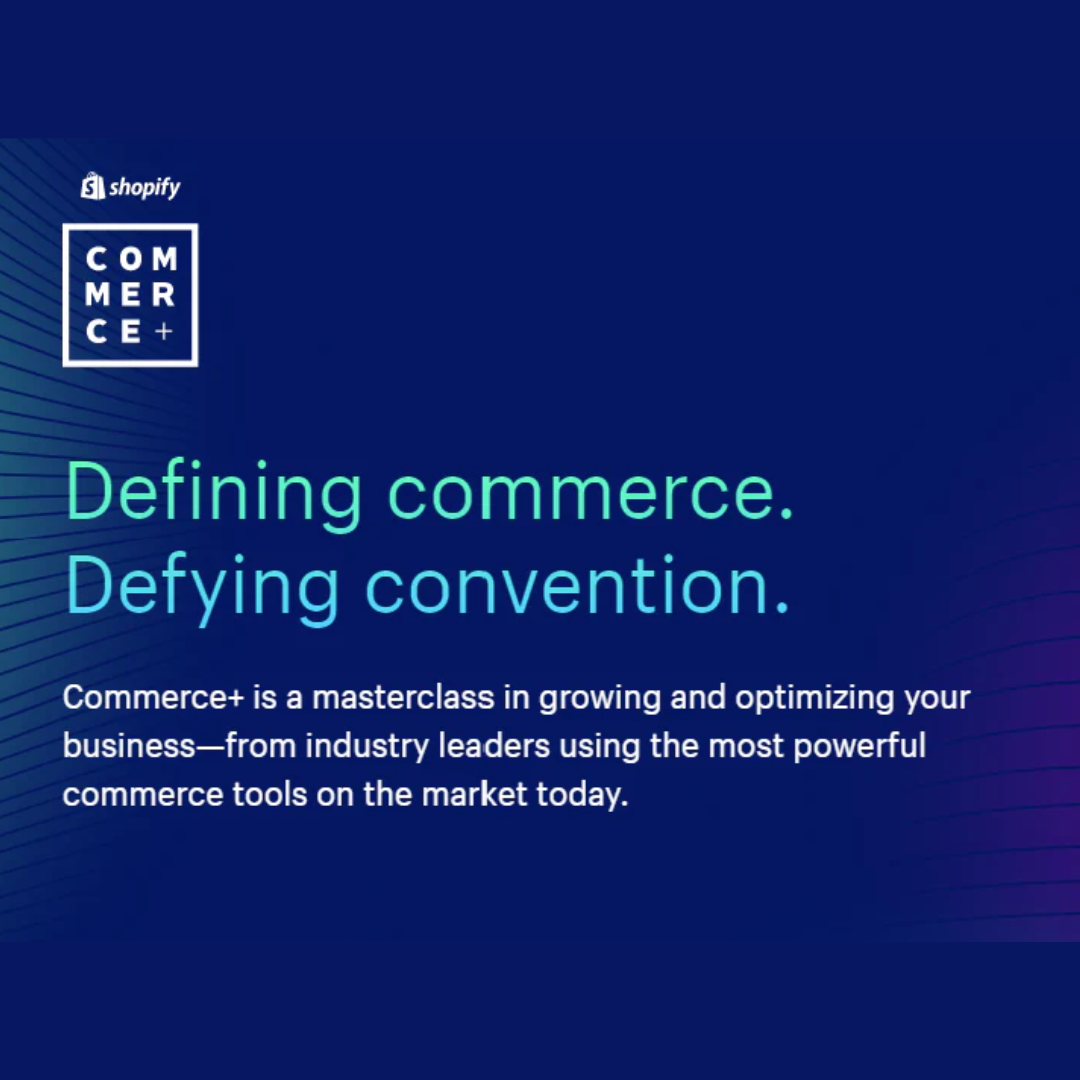As we delve into the fundamentals of the landscape of online selling, both Shopify and Amazon pop up as significant players. The terms' platform' and 'aggregator' are also in the mix. Modern-day merchants need technology to commoditize their business, and they know it. Many of them find themselves wondering whether they have to choose one or the other or if they need to embrace both.
Platform companies are shaping the future of e-commerce and shifting the landscape of competitive dynamics online, allowing sellers and buyers improved access to one another. Aggregators control all interactions between buyers and sellers but give businesses access to customers they wouldn't ordinarily have access to.
To understand the power and beauty of platforms (and aggregators), you should know what they are. And, as importantly, know what they're not. Let's take a closer look.
Platforms vs. Aggregators
Let's explore the differences between Shopify, the platform on a mission to take over the online sales world as we know it, and Amazon, the assertive aggregator. The two are not the same. There's a misconception that you can place Shopify and Amazon under the same umbrella and that merchants have to choose between the two when setting up an online shop.
As more and more independent stores compete as e-commerce brands, drop-shippers, omnichannel retailers, and digital goods merchants, aggregators' scale and power multiply.
Amazon commands a huge chunk of online retail sales in the U.S. In 2020 the industry dominator controlled around 47% of all online retail spending in the country. However, Shopify achieved an exponential AGR of 67% by the second quarter of 2021. If there were a battle between the two, the numbers would clearly indicate that both avenues are growing, but Shopify is doing it quicker.
Why?
Aggregators wield power because they ostensibly want to do things for you (i.e., control). Platforms want to help you do things better - they facilitate relationships between 3rd-party suppliers and buyers. Companies like Microsoft confuse things by using the word 'platform' in the wrong context, which exacerbates misunderstanding and results in creating issues rather than solving them.
Of course, there's a reason behind this: platforms are aggregators' biggest competition, despite the incredible success achieved by aggregators.
The Amazon Empire
We've already established that Amazon is the top dog in e-commerce. Not even industry megalith Walmart can compete with them head-on. After years of trying, Walmart finally realized this and why: e-commerce needs a different vault chain than retail stores. A more successful response would have been for Walmart to focus on its strengths instead of trying to imitate a company that's already got the majority market share.
How Amazon got there:
In the beginning, Amazon copied a traditional brick-and-mortar retail model into the online world: buying products wholesale and selling them to customers. As sales grew, Amazon could build out its fulfillment network. With seemingly unlimited shelf space, it was the obvious next step. Today Amazon has over 300 fulfillment centers and many more distribution facilities.
To put this into context, Walmart has only around 150 distribution centers in total today. Since Amazon already had ten in 1999, it would take Walmart decades (and so many dollars and resources!) to catch up. Not to mention the 2006 announcement Amazon made that 3rd-party merchants could also use their fulfillment centers. It meant that Amazon diversified into both retail and fulfillment. Again, an obvious next step.
Amazon's fulfillment centers serve consumers and 3rd-party merchants, and all of this is barely noticeable to customers, even though Amazon effectively OWNS all customer interactions. They cleverly managed to incorporate 3rd-party merchants while still owning the entire process from their shoppers' perspective, in typical aggregator fashion. Is this the best/only solution?
With aggregators, all functions are taken care of internally, and suppliers are commodities. Because of this, aggregators benefit from more 3rd-party merchants on the platform. The more merchants and products on offer, the more the aggregator can build up the fulfillment network. All 3rd-party merchants are left to do is compete on pricing.
Although this seems like a win-win situation, it suggests a need for an alternative. Some suppliers want to externalize their efforts. They want to create an ecosystem that works symbiotically, so they need something different—an alternative like Shopify.
The Shopify Platform, Now With Fulfillment!
No, Shopify is not trying what Walmart tried. Since you can't buy anything on Shopify.com, it can't really be an Amazon competitor. And yet, millions of people buy products from Shopify without even knowing the company exists.
The difference between Shopify and Amazon is that Shopify is a platform. Instead of directly dealing with customers, hundreds of thousands of 3rd-party merchants use Shopify to do all the work themselves. Merchants and customers interact with one another, not with Shopify.
They don't have to compete to get the top search result on Amazon.com or cut their prices to offer the best deal. Instead, merchants earn their customers' attention through their own marketing efforts.
And it’s working.
According to an article in Charged Shopify has become a strong adversary to Amazon in terms of reach. For the first time ever, Shopify received more online traffic than Amazon when it reached a staggering 1.16 billion average monthly unique visitors during the second quarter of 2021.
In comparison, Amazon only received a monthly average of 1.10 billion during the quarter ending in June. Shopify hopes to further widen this gap and expects to attract around 1.22 billion unique monthly visitors in the next quarter. Shopify’s astronomical growth since last year is only one of the reasons why it is shooting up in the ranks and getting set to take over.
Shopify can compete with Amazon without becoming Amazon (or trying to!)
Unlike Walmart, Shopify is not trying to reinvent the wheel by attacking Amazon head-on. Naturally, there will be failures as well as success stories. But losses could have an upside. Even though more failures are likely to happen, the easier it is to start an e-commerce business on a platform, there is also a greater chance of success. The beauty is that whether merchants succeed or fail, it will be on their terms.
Because of this, Shopify is Amazon's biggest competition, but also a company they can't compete with, especially considering Shopify's exciting announcement of offering fulfillment services that offer:
- Smart inventory-allocation tech that uses machine learning
- Low rates with an expanding network of logistics and storage companies
- Omnichannel support
- Customized branding and packaging
- Complete exchange and returns services
All of this means customers can have exactly what they want; free deliveries and quick shipping, and it's all managed in Shopify.
What makes this offer better than Amazon?
Amazon suppliers don't have much choice. They have to hide their brand everywhere, from the website to the packaging used to ship products. Amazon fulfillment centers take care of all of those details. With the Shopify Fulfillment Network, Shopify sellers can choose which services they want to use and what they want to take care of on their own. They can maintain autonomy.
Shopify is an interface between sellers and third-party logistics companies (3PLs). It benefits both merchants and 3PLs:
- Merchants don't all have the means to deal with multiple 3PLs to ensure optimally placed orders and quick, inexpensive deliveries.
- Most larger logistics companies don't deal with small-scale sellers.
- Dealing directly with merchants on an individual basis makes it difficult for 3PLs to scale. By interfacing with Shopify only, 3PLs can solve this problem.
The Value of a Partner Economy
As Shopify referral partners drive merchants to the platform, they create value. App developers build apps that manage Shopify stores, and theme designers create themes that customize the look and feel of stores. All work synergistically to create more value for partners.
Shopify is increasing its bottom line alongside its partners, who earned a staggering $12.5 billion in revenue in 2020.
How platforms leverage modularity
The way to successfully compete against an integrated aggregator like Amazon is not by attempting to replicate what the industry giant has achieved over decades of hard work and vast resources. That would be like a small, privately owned general goods store trying to take on Walmart.
Amazon has had years to perfect its strategy and has finely honed every aspect of the business. From customers to suppliers to fulfillment (and everything in between!) The only way is differentiation. I.e., a completely aligned, synergistic ecosystem. I.e., Shopify.
The Shopify platform leverages the best parts of modularity, diversity, and competition at different sections of the value chain to align incentives. Referral partners, developers, theme designers, and now 3PLs are all incentivized together to ensure overall success. When everyone works together towards a common goal, it makes it so much more achievable.



